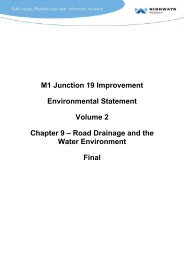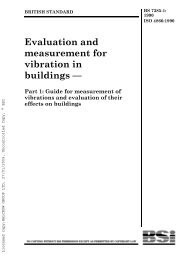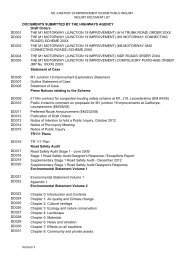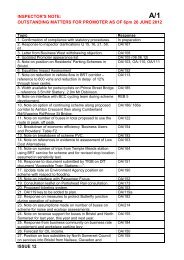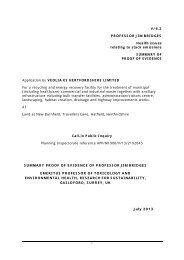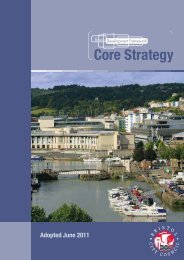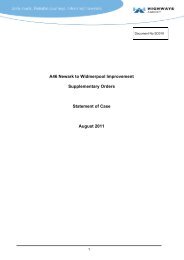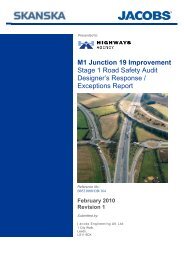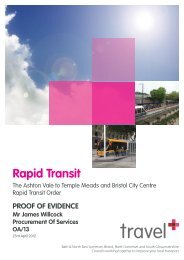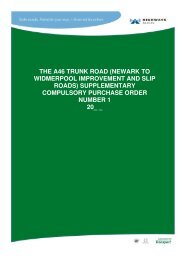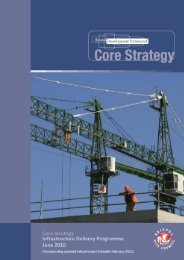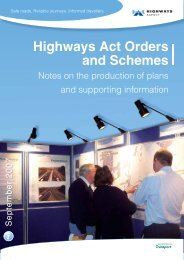The Road Vehicles (Construction and Use) Regulations 1986
The Road Vehicles (Construction and Use) Regulations 1986
The Road Vehicles (Construction and Use) Regulations 1986
You also want an ePaper? Increase the reach of your titles
YUMPU automatically turns print PDFs into web optimized ePapers that Google loves.
Document Generated: 2012-02-28<br />
Status: This is the original version (as it was originally made). UK Statutory Instruments<br />
are not carried in their revised form on this site. <strong>The</strong> electronic version of this UK Statutory<br />
Instrument has been contributed by Westlaw <strong>and</strong> is taken from the printed publication. Read more<br />
(a) so locatedas to be easily inspected <strong>and</strong> maintained,<br />
(b) so located<strong>and</strong> either insulated or shielded that its use shall not cause or be likelyto cause<br />
danger due to the presence of any flammable material,<br />
(c) so constructed<strong>and</strong> located as not to impose undue stress on any pipe or fitting, <strong>and</strong><br />
(d) so fastenedor located as not to work loose or move in relation to the vehicle.<br />
14. With the exception of catalytic heating appliances,every appliance of the kind described in<br />
regulation 96(3)(b) or (c)which is fitted to a motor vehicle shall be fitted with a flue which shallbe—<br />
(a) connectedto an outlet which is on the outside of the vehicle,<br />
(b) constructed<strong>and</strong> located so as to prevent any expelled matter from entering the vehicle,<strong>and</strong><br />
(c) located sothat it will not cause any adverse effect to, or suffer any adverse effectfrom, the<br />
exhaust outlet of any engine or any other source of heat.<br />
General requirements<br />
15. Every part of a gas propulsion system or agas-fired appliance system, excluding the appliance<br />
itself, shall be—<br />
(a) so far asis practicable so located or protected as not to be exposed to accidentaldamage,<br />
(b) soundly <strong>and</strong>properly constructed of materials which are compatible with one another<br />
<strong>and</strong>with the gas used or to be used <strong>and</strong> which are capable of withst<strong>and</strong>ing theloads <strong>and</strong><br />
stresses likely to be met in operation, <strong>and</strong><br />
(c) so designed<strong>and</strong> constructed that leakage of gas is unlikely to occur.<br />
SCHEDULE 6 (see regulation 41)<br />
CONSTRUCTION OF MINIBUSES<br />
<strong>The</strong> requirements referred toin regulation 41are as follows—<br />
Exhaust pipes<br />
1. <strong>The</strong> outlet of everyexhaust pipe fitted to a minibus shall be either at the rear or on the offside<br />
of the vehicle.<br />
Doors—number <strong>and</strong> position<br />
2.—(1) Every minibus shallbe fitted with at least—<br />
(a) one service dooron the near side of the vehicle; <strong>and</strong><br />
(b) one emergencydoor either at the rear or on the off side of the vehicle so, however, thatany<br />
emergency door fitted on the off side of the vehicle shall be in additionto the driver's door<br />
<strong>and</strong> there shall be no requirement for an emergency dooron a minibus if it has a service<br />
door at the rear in addition to the servicedoor on the near side.<br />
(2) No minibus shallbe fitted with any door on its off side other than a driver's door <strong>and</strong><br />
anemergency door.<br />
132



